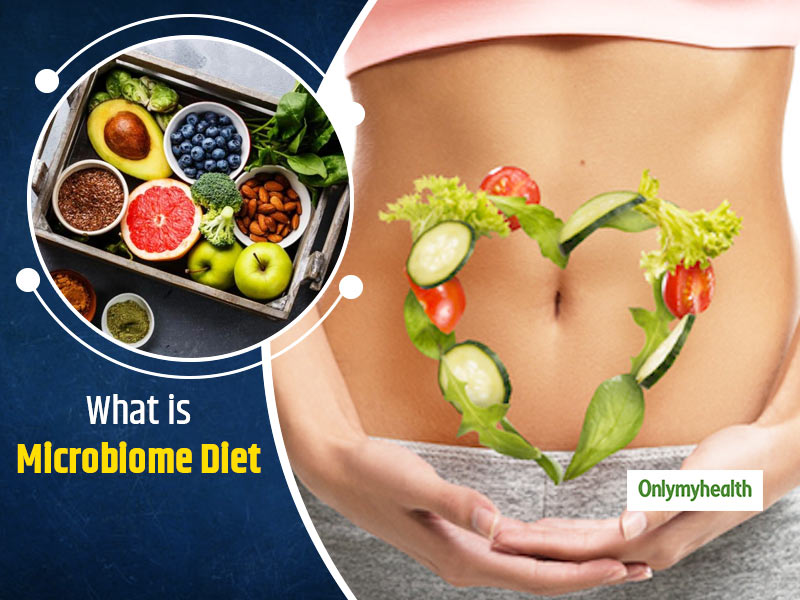
The collection of microorganisms such as bacteria, fungi and archaea, present in a person’s intestines is referred to as microbiome. A microbiome diet is a three-phase diet and is becoming popular these days. It aims to keep your gut microbiome healthy. According to Ms. Manisha Chopra – Nutritionist, Dietician and Fitness Expert, the food we eat impacts the microbiome in our gut. In a microbiome diet, the person is asked to eat plant-based foods. This diet basically focuses on green vegetables, fruits, good fats and lean proteins. It helps in shedding weight and helps a person adopt a healthy lifestyle.
Table of Content:-
If a person is having a varied range of good gut flora it will benefit his health. But there are many reasons due to which gut flora can become less diverse and less beneficial. The microbiome diet plays an important role in building immunity and inflammation. A healthy microbiome diet may reduce the risk of diseases, such as cancer, diabetes, cardiovascular diseases, etc.
Some people may experience some side effects like acidity or bloating due to an increase in the amount of fibre in their diet but these problems are resolved over time as their bodies get used to it.
What Is Microbiome Diet?

The microbiome diet is a three-phase procedure. It takes around 7 weeks to complete two stages of this diet. The third stage is longer than the other two.
Phase 1
The first phase of the diet takes 21 days to complete. It focuses on the 4 R’s, that is:
- Removing toxic food from the diet that causes inflammation and imbalance in your gut bacteria.
- Repairing the gut by eating plant-based foods.
- Replacing stomach acid and pancreatic enzymes by increasing the intake of herbs and spices.
- Reinoculation of the gut with healthy bacteria
During this phase, you have to cut a number of food and ingredients from your meals. Following is a small list of items you should avoid:

- Fried food
- Packaged food
- Sugar
- All types of grains
- Fish and meat
- Vegetables containing starch like potato
- Artificial colouring and sweeteners
- Dairy products, except butter and ghee
- Eggs
- Legumes except for chickpeas and lentils
Also Read: Not Just Stomach But Good Gut Bacteria Are Also Good To Prevent Heart Diseases
You can also take the following supplements during this phase:
Antimicrobials: You can include garlic, grapefruit seed extract, and oregano oil to kill pathogens.
Acids and enzymes: You can take supplements that contain digestive enzymes in order to break down proteins, fats, and carbohydrates in food.
Phase 2
After the completion of phase 1, you have to follow the phase two diet for the next 28 days. In this phase, several options open up like:
- Dairy products like milk
- Organic, free-range eggs
- Mangos, melons, peaches, and pears
- Gluten-free grains, millet, oats, quinoa, etc.
- Beans, including, green, black, red, white, and kidney beans
- Sweet potatoes and yams
Also Read: Research Claims That Drinking One Cup Coffee Daily Is Good For Digestion

Phase 3
The last phase of the microbiome diet is totally dedicated to the maintenance of the results of Phase 1 and 2. It is also known as the ‘maintenance phase’.
There is no fixed length for this stage. You can continue this phase for as long as you wish to or until you reach your desired weight. You can also continue this Phase 3 diet in order to maintain your weight loss. By this time, your gut and microbiome will get strong. Also, you can gradually start eating other items that were advised to avoid but only for one meal per day. Try to avoid added sugar and packaged and fried food as much as possible.
Read More Articles Healthy Diet
Also watch this video
How we keep this article up to date:
We work with experts and keep a close eye on the latest in health and wellness. Whenever there is a new research or helpful information, we update our articles with accurate and useful advice.
Current Version